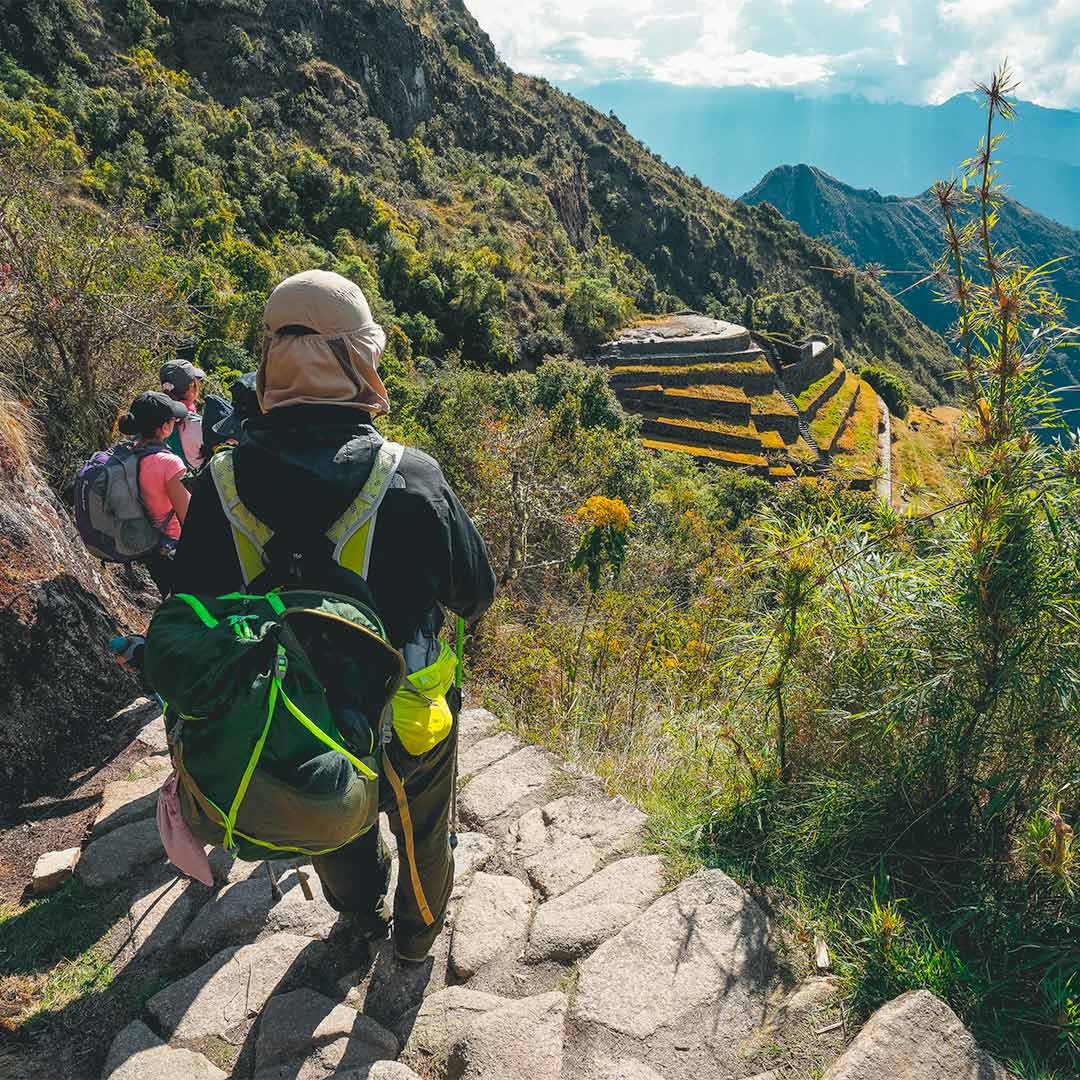Embarking on a journey to Machu Picchu, the crown jewel of the Inca civilization, requires not just enthusiasm but also the right gear, especially regarding footwear. In this comprehensive guide, we will explore the best hiking boots for your adventure to this ancient wonder, ensuring your trek is as comfortable as it is unforgettable.
What will you find here?
- Are hiking boots needed for Machu Picchu?
- Key considerations for Footwear
- Best Overall hiking boot for Inca Trail
- Best Boots for Trekking and Inca Trail Enthusiasts
- Pros and cons of classic hiking boots
- Pros and cons of trail running shoes for hiking
- Frequently Asked Questions
Are hiking boots needed for Machu Picchu?
When trekking through the varying terrains of Machu Picchu and the Inca Trail, the right footwear is crucial. While the site itself has well-maintained paths, the surrounding trails can be rugged, steep, and sometimes slippery.
Key considerations for Footwear:
- Terrain: The Inca Trail includes uneven paths and stone steps.
- Weather: Conditions can be unpredictable, from rainy to dry.
- Comfort and Safety: Proper hiking boots provide ankle support and grip.

Best Overall hiking boot for Inca Trail
|
Brand & Model
|
Features
|
Price Range
|
Image
|
|
Merrell Moab 2 Mid Waterproof
|
This hiking boot falls into the lightweight/midweight category, weighing 2 lb. 4 oz., and features M Select DRY waterproofing.
|
$100
|

|
|
Salomon Quest 4 GTX
|
This medium/heavyweight hiking boot, weighing 2 lbs. 14.2 oz. and featuring Gore-Tex waterproofing, is known for being rugged, protective, and comfortable.
|
$230
|

|
|
Salomon X Ultra 3 Mid GTX
|
This lightweight hiking boot weighs 1 lb. 15.7 oz. and features waterproof Gore-Tex material.
|
$130
|

|
|
Asolo Falcon GV
|
This light/medium hiking boot weighs 2 lb. 2.6 oz. and is equipped with Gore-Tex waterproofing.
|
$250
|

|
|
Lowa Renegade GTX Mid
|
This midweight hiking boot, weighing 2 lbs. 7 oz. and featuring Gore-Tex waterproofing, is favored for being lightweight and comfortable with sufficient support for most backpackers.
|
$245
|

|
Note: Prices and models are for reference only.
Best Boots for Trekking and Inca Trail Enthusiasts
- Fit and Comfort: Ensure a snug fit with enough toe room and minimal heel slippage.
- Material Quality: Opt for durable, waterproof materials like GORE-TEX.
- Ankle Support: Choose boots with adequate ankle support for uneven terrains.
- Sole and Grip: Look for sturdy soles with a strong grip for slippery paths.
- Break-in Period: Wear the boots beforehand to break them in and prevent blisters.
- Breathability: Ensure the boots are breathable to avoid excessive sweating.
- Weight Consideration: Balance durability with the weight of the boots.
- Professional Advice: Consult with outdoor specialists for tailored recommendations.
- Read Reviews: Look up reviews and testimonials from experienced hikers.
- Budgeting: Invest in high-quality boots for the best trekking experience.
Pros and cons of classic hiking boots
|
Pros of Classic Hiking Boots
|
Cons of Classic Hiking Boots
|
|
Durability: Built to withstand tough conditions and rugged terrains.
|
Weight: Generally heavier, which can lead to faster fatigue.
|
|
Protection: Offer good protection against rocks, roots, and rough terrain.
|
Breathability: Often less breathable, can lead to sweaty feet.
|
|
Ankle Support: High-top designs provide excellent ankle support.
|
Longer Break-In Period: Can be stiff and require a longer period to break in.
|
|
Water Resistance: Typically offer better water resistance and are ideal for wet conditions.
|
Less Flexibility: Tend to be less flexible, which can restrict foot movement.
|
|
Stability: Provide great stability, especially on uneven trails.
|
Warmth: Can be too warm in hot weather conditions, leading to discomfort.
|
|
Longevity: Often last longer due to robust construction and materials.
|
Price: High-quality models can be quite expensive.
|
Pros and cons of trail running shoes for hiking
|
Pros of Trail Running Shoes for Hiking
|
Cons of Trail Running Shoes for Hiking
|
|
Lightweight: They are much lighter than classic hiking boots, reducing foot fatigue.
|
Less Protection: Offer less protection against rocks, roots, and rugged terrain.
|
|
Increased Flexibility: More flexible, allowing for a greater range of foot movement.
|
Limited Ankle Support: Low-top designs provide minimal ankle support, which can be a disadvantage on uneven terrain.
|
|
Breathability: Generally more breathable, reducing the likelihood of sweaty feet.
|
Less Water Resistant: Often less effective at keeping water out compared to hiking boots.
|
|
Comfort: Tend to be more comfortable and require a shorter break-in period.
|
Less Durable: Can wear out faster than hiking boots due to lighter construction.
|
|
Better for Warmer Climates: Ideal for hiking in hot weather due to their lighter build and breathability.
|
Less Stability: Might not provide as much stability as hiking boots, especially under heavy load.
|
|
Versatility: Suitable for a variety of activities beyond hiking, like trail running.
|
Varied Traction: Traction might not be as aggressive as in hiking boots, affecting grip on very rough trails.
|
Frequently Asked Questions
1. Can I use regular sneakers for Machu Picchu?
While sneakers can be used for the main site, hiking boots are recommended for longer treks.
2. How important is waterproofing in hiking boots?
Given the variable weather conditions, waterproof boots are highly advisable.
3. Should I break in my hiking boots before the trek?
Absolutely, breaking in your boots will help avoid blisters and discomfort.

















